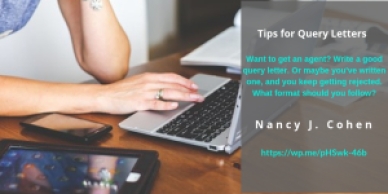You’ve finished your manuscript. Now it’s time to either submit it to a publisher or put the book into production prior to indie publishing your work. Which way to go?
Delays Will Happen
As I’ve just finished a new series starter, I’ve debated whether to submit it to a traditional publisher or go the indie publishing route. But first, a diversion.
In case you were wondering why I haven’t posted in so long, other than promo posts, the revisions on this story took me a long time. A lot of this was due to family issues—first my husband’s illness and passing, and then the birth of my granddaughter. From sadness to joy, this journey sapped my mental energy along with the myriad tasks of settling an estate. Editorial revisions and then beta reader corrections kept me focused on finishing the book. I’m happy to say this work is done.
Choosing a Traditional Publisher
So back to the decision on what to do with the work. Submitting to a traditional publisher and getting accepted provides several advantages. You don’t have to spend any money up front to produce the book. The publisher covers those costs and will even pay you an advance. They may offer a contract for two or three books, giving you employment for the foreseeable future.
A trad publisher can get reviews at major sites such as Publisher’s Weekly and Kirkus. They might get the book into bookstores or libraries. Most of all, though, is the prestige that comes with having a publisher recognize your talent. You can speak on panels at conferences that favor traditionally published works. Bookstores might be more willing to host a signing. And people you know might show you more respect, especially when you say deadlines are looming and you have to work.
The Other Side of the Coin
However, not all is cookies and cream with a traditional publisher. It could be a year or more before your novel is published. You have no control over pricing. You’re expected to promote your work by having a vibrant social media presence, attending conferences, and booking speaking engagements to put yourself out there.
Deciding to Indie Publish
Those factors above made the decision easy for me. It’s been over a year since I’ve had a new release (box set number six) and much longer since my last full-length novel. Getting a new book in the hands of my readers as fast as possible is my priority. That eliminates the choice of a traditional publisher right away.
Then there’s the issue of pricing. I like to keep my books affordable for readers, and that won’t happen unless I publish them myself. As for reviews, I don’t think readers care so much about the major sites as they do about consumer comments. This is why you, dear readers, are always begged to review our books. And lastly, regarding travel, I’m not as young as I used to be nor do I have my husband anymore to escort me to book events. So I prefer to stay closer to home and only attend local functions.
What Else to Consider
“But what about the book contracts and advance money?” you ask. Well, here’s the thing. With everything else going on in my life, I don’t want to work with deadlines anymore. I need to set my own pace and not deal with the stress of meeting a deadline or even having to write another full-length novel. I get to decide what to do and when. Yet they say to be successful as an indie author, you must produce several books a year. If you can do it, fine. If you’re not so inclined, that’s okay too. It’s your choice.
As for those advances, they’re trickled out at different stages in the publishing process. Plus, you’ll only get paid twice a year, or in the case of my last publisher, only once a year. As an indie publisher, however, you get paid EVERY MONTH! And you get to keep all the money, aside from the cut taken by the distributors. No agent fees. No money set aside for reserves against returns. No inscrutable royalty statements. You’re your own boss and will sink or swim on your own merits. Or on the foibles of the marketplace.
One Last Caveat
If you are a new author starting out, I would suggest you attempt to get a traditional publisher first, if you mean to make this a professional career. It will help you build your readership, and you’ll learn a lot from the editing process. Later down the road, you can decide to indie publish your work once you are established. Or not. Many authors have started out self-publishing their work and been successful, but you do have to work hard at branding and produce books often enough to get your series out there. Either way, be sure you work with a professional editor.
The Next Step
The next step is to put the book into production. I’ll cover what this means in another post.
Meanwhile, if you’ve read this far, leave a comment and I’ll enter you into a drawing for a signed copy of an original, uncorrected proof of Dead Roots, #7 in my Bad Hair Day series. Prize drawing will take place next weekend and winner will be announced here. Only U.S. Residents are eligible, although comments from everyone are welcome.






